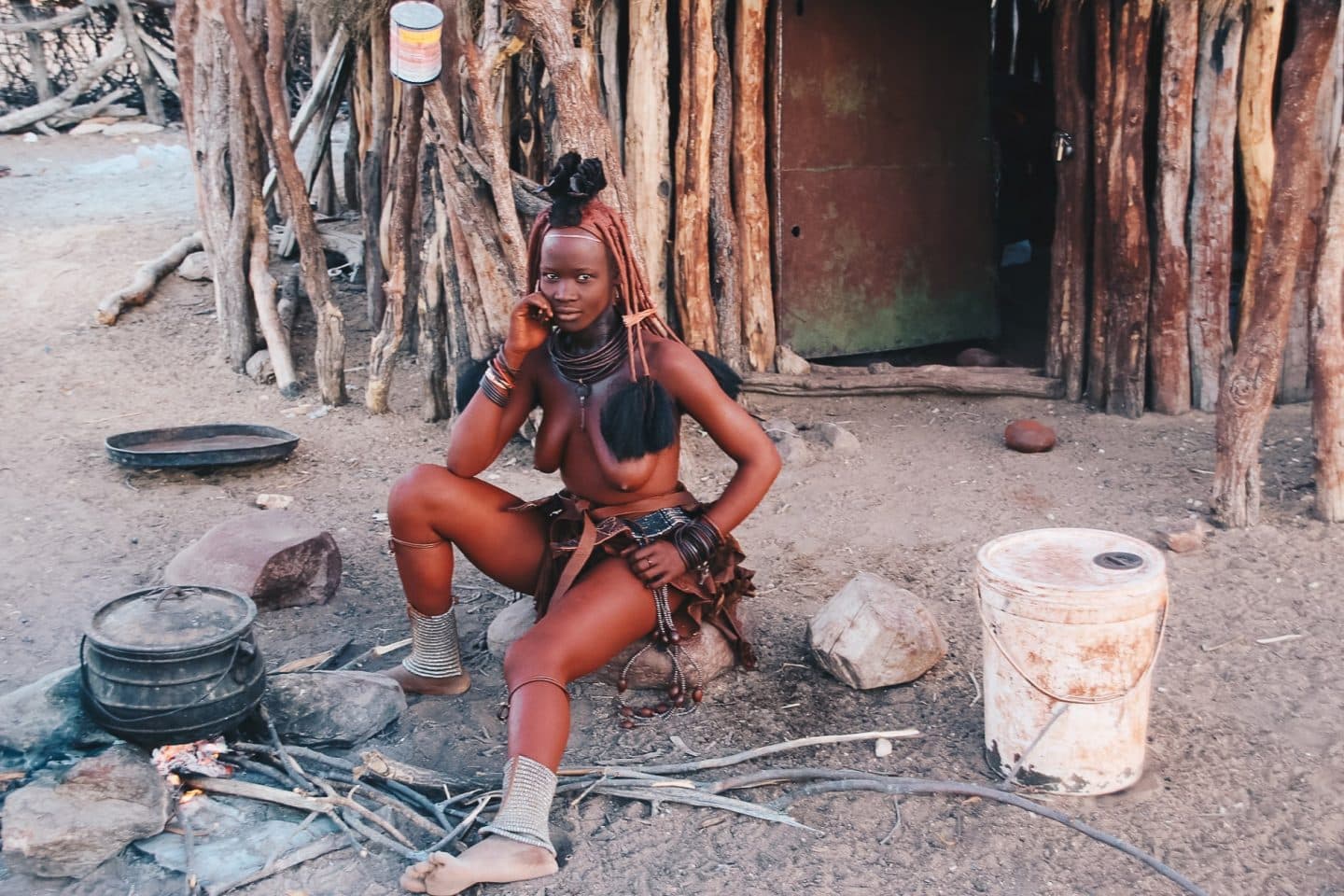
Who hasn’t dreamed of meeting this Namibian ethnic group? They intrigue us with their colors, their dress and their way of life, which is why I was eager to meet them and learn a little more about them and their ancestral way of life! A look back at our authentic encounter with the Himbas.
It is difficult to give an exact figure for the number of Himbas in Namibia, given their great mobility. They are still a semi-nomadic people, herding goats and cows between the Kaokoveld, an arid region in the north of the country and the river Kunene, which forms the border with Angola. However, there are between 10,000 and 15,000 scattered throughout Kaokoland.
The Himbas are related to the Herreros, another Namibian people, recognizable by their long, colorful dresses and horn-shaped hats. They speak the same dialect, have common origins, can intermarry but the Hereros have adopted the Dutch colonial style of dress.
I also invite you to read all our other articles on Namibia to help you prepare for your trip:
- 7 reasons to visit Namibia
- Discover the cheetah conservation center
- The practical guide to planning your trip to Namibia
- Our top 10 things to do in Namibia
FOCUS & QUOTATION REQUEST
It’s important to note that this encounter is unique to each individual. You may not experience the same thing as we do, because it all depends on your attitude, personality and behavior towards them. We were introduced to the Himbas by our guide, also a Himba, who rarely brings foreigners to this village. In no way is it voyeurism. The Himbas are very curious people who love to have their picture taken. We asked permission each time, but they were so keen to play the game that they kept asking us. It’s up to you to establish a climate of trust and interest in them, as the Himbas don’t wait for you and live their lives in this remote village.
As an approved travel agency, I can offer you the opportunity to discover the Himba territory accompanied by a guide (compulsory) for a minimum of 3 days or more. The roads are long, revealing incredible landscapes and cultures that live together (Himbas, ZImbas, Hereros, etc). Nothing is planned in advance, you just let yourself be carried along by the encounters, but you’ll have the chance to rub shoulders with these peoples from near and far for a few days. This discovery is only available as part of an entire stay booked with me. The extension is not sold separately.
The average duration is 17 days, but this can be adjusted according to your possibilities and desires. The price is higher than for a classic trip to Namibia, due to the organization required to discover this territory, the many hours of driving (up to the border with Angola), the guide and the vehicle required to cover the tracks. .For all quotation requests, please contact me at contact@mademoiselle-voyage.fr
| Visit himbas video and all our travel videos on our Youtube channel
| LIVING WITH THE HIMBAS
Our meeting was special because I wanted to spend at least 24 hours with them in their village. I was looking for authentic villages, with no other travelers to share my experience. The road to the village is quite long, taking at least 3 to 4 hours on a track from Opuwo, near the Angolan border. There are no signs to show you the way. It’s best to be armed with a good guide who knows the terrain, knows how to cross dry rivers and turn right then left after the huge rooted trees! But what a joy to be alone and enjoy them, without being surrounded by international travellers! We had them all to ourselves!
First we visited the school our guide had built for them. The children learn English so they can work in the city and support their families. The little ones were curious and particularly appreciated my long hair and Antoine’s beard. We were very lucky to be able to visit the classes, share special moments playing a game of soccer with them or listening to them sing and watching them dance in the sand. After a few hours with them, we head for the villae where they live. I feel like time has stood still here, not a sound on the horizon and absolutely nothing around except plains and a river! The Himbas live by the sun and the light, so we let ourselves be carried along by this rhythm of life, which suited us.
At the start of this meeting, they were initially discreet. The first people appeared in front of us, curious but so welcoming with their big smiles. I remember this 17-year-old girl, sitting on the ground, trimming the village chief’s beard with a kitchen knife. For the record, the village chief had bloody cheeks from shaving. He was so happy to welcome us that he wiped his face and shook our hands right away. We pretended not to see the blood on our hands because we didn’t want to be rude! We visited their traditional houses, were introduced to all the people in the village, and were even asked to carry one of their babies in my arms.
They are a people who have preserved their clothing and ornamental customs. I looked at them in amazement as I realized one of my dreams. The first contact was fairly easy for us, and fortunately we had a Himba guide to translate our many questions. Time passed slowly and we gradually entered their atypical homes. They were conical in shape, made from palm leaves, oily earth and cow dung, and gave off a strong smell inside. Once inside, they wanted to show us their beauty products and asked us lots of questions about our culture. We were lucky enough to witness their “grooming”.
Himbas are not allowed to wash with water, so they clean their skin by smearing a mixture of ochre and butter on their bodies. This lotion moisturizes their skin and protects them from the scorching sun, as well as from insects. Once dried on the body, the lotion resembles a kind of clay, easy to exfoliate. Their hair is covered with a kind of clay mixed with ochre, and the hairstyle differs according to the age of the person. Young women wear a piece of sheepskin on their head, announcing the passage from adolescence to marriageable age. Young girls don’t smear their skin with this mixture of grease and hematite (an iron ore that turns red when ground) like their elders. The Himbas are quite coquettish, perfuming their necks with a black, grainy paste made from tree bark. And it smells great!
In terms of clothing, the Himbas wear a simple leather loincloth, and most go barefoot. The topless women wear various ornaments such as jewels and belts, while the men are distinguished by a headdress resembling a braided crest, held vertically.
I remember this young girl who wanted to be beautiful to receive us. She asked us to take her picture and pose for our lenses. So, discreetly, we followed her into her house, sitting on the floor to watch her do it and get ready for us. I watched them in great detail and enjoyed every moment with them!
As the hours passed, the bond between us was already easily forged. We were now considered their guests. As the day drew to a close, some of the women began heating water on the wood fire to prepare the main dish and staple of the Himbas diet: the Porridge (corn flour, which when cooked resembles a dough halfway between semolina and breadcrumbs). We had dinner together, then danced around the fire to some traditional dances before suggesting that they watch The Lion King from our computer. We thought he had to see it, as the landscapes in this beautiful cartoon really do resemble those of Namibia. Bingo! It worked, and all the kids got together to watch the cartoon. We have fond memories of this moment, as their reactions were just magnificent in front of the screen. They didn’t understand a word of English, but the images spoke for themselves. They laughed at Timon and Pumba, howled at the lions and told our guide that this was their home! It was truly a magical moment to experience this with them.
As the evening drew to a close, we headed off to bed. It’s strictly forbidden to sleep in their houses, so we slept in our 4×4 at the entrance to the village. Early in the morning, a few children and two Himbas girls came to wake us up. Our tent intrigued them, as did our lifestyle (brushing our teeth, our products, the food we ate…). We were invited to try on their traditional outfits. They absolutely wanted me to wear their loincloth bare-breasted. After a few trial runs and some final exchanges, we set off in the late morning, hearts on both sides at the thought of leaving them. I could feel that they were happy that we had come to see them and that we were interested in them, and they made tender gestures towards me and hugged me.
It took me a long time to come down from my little cloud, and even today when I talk about them, my eyes sparkle and I think back to those moments. I hope you too will enjoy this unique, authentic experience in a privileged setting.
GOOD TO KNOW
I don’t give out my guide’s contact and I don’t organize day tours to meet the Himbas. These people live quite far away, in remote villages, and you need to have a bit of time on your hands to meet them.
As an approved travel agency, I can offer you the opportunity to discover the Himba territory accompanied by a guide (compulsory) for a minimum of 3 days. The roads are long, and it’s a discovery of incredible landscapes, but also of cultures that live together (Himbas, Hereros, etc.). Nothing is planned in advance, but you’ll have the chance to get up close and personal with these people for a few days. This discovery is only available as part of an entire stay booked with me. The extension is not sold separately.
The average duration is 17 days, but this can be adjusted according to your possibilities and desires. The price is higher than for a classic trip to Namibia, due to the organization required to discover this territory, the many hours of driving (up to the border with Angola), the guide and the vehicle required to cover the tracks. For all quotation requests, please contact me at contact@mademoiselle-voyage.fr
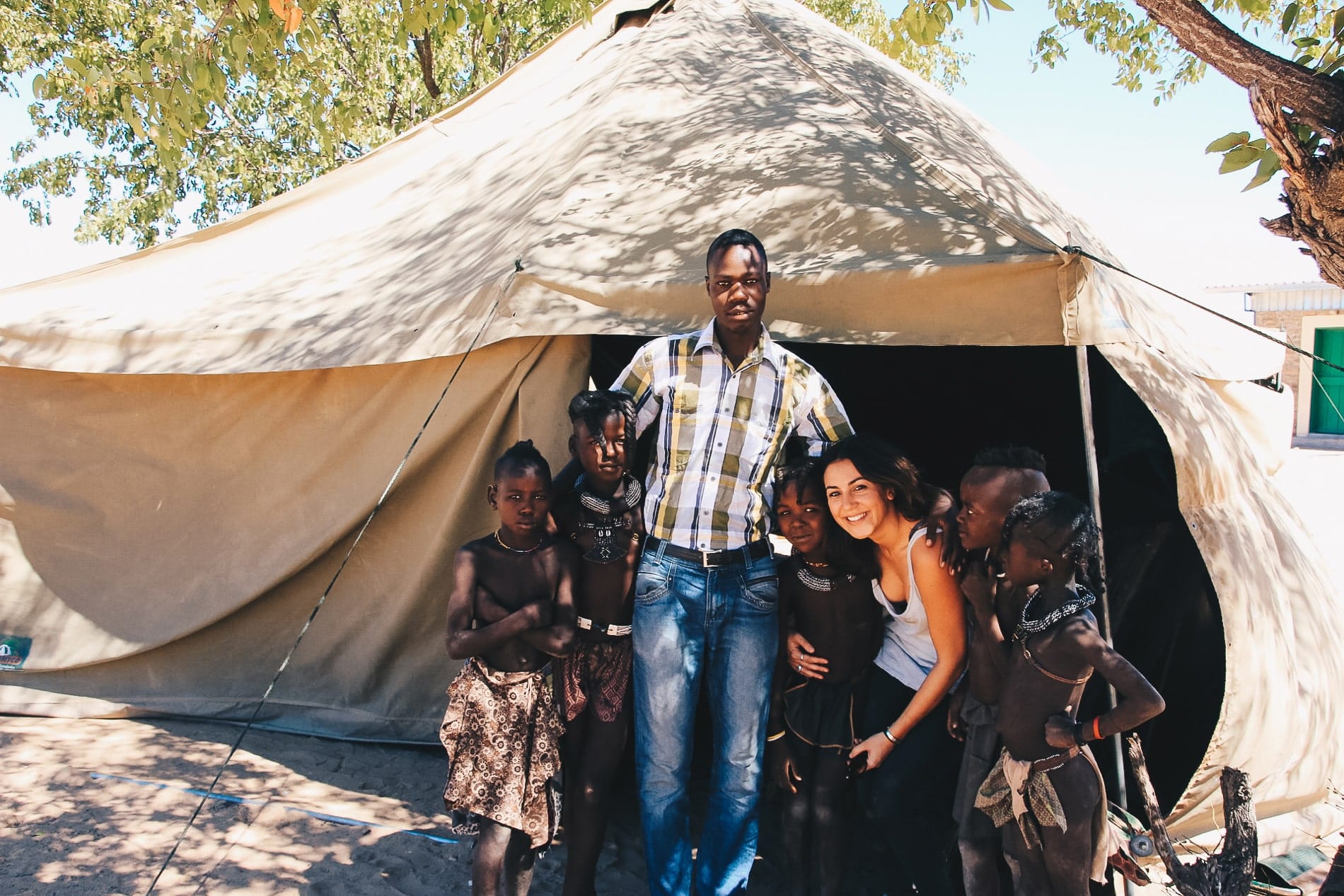
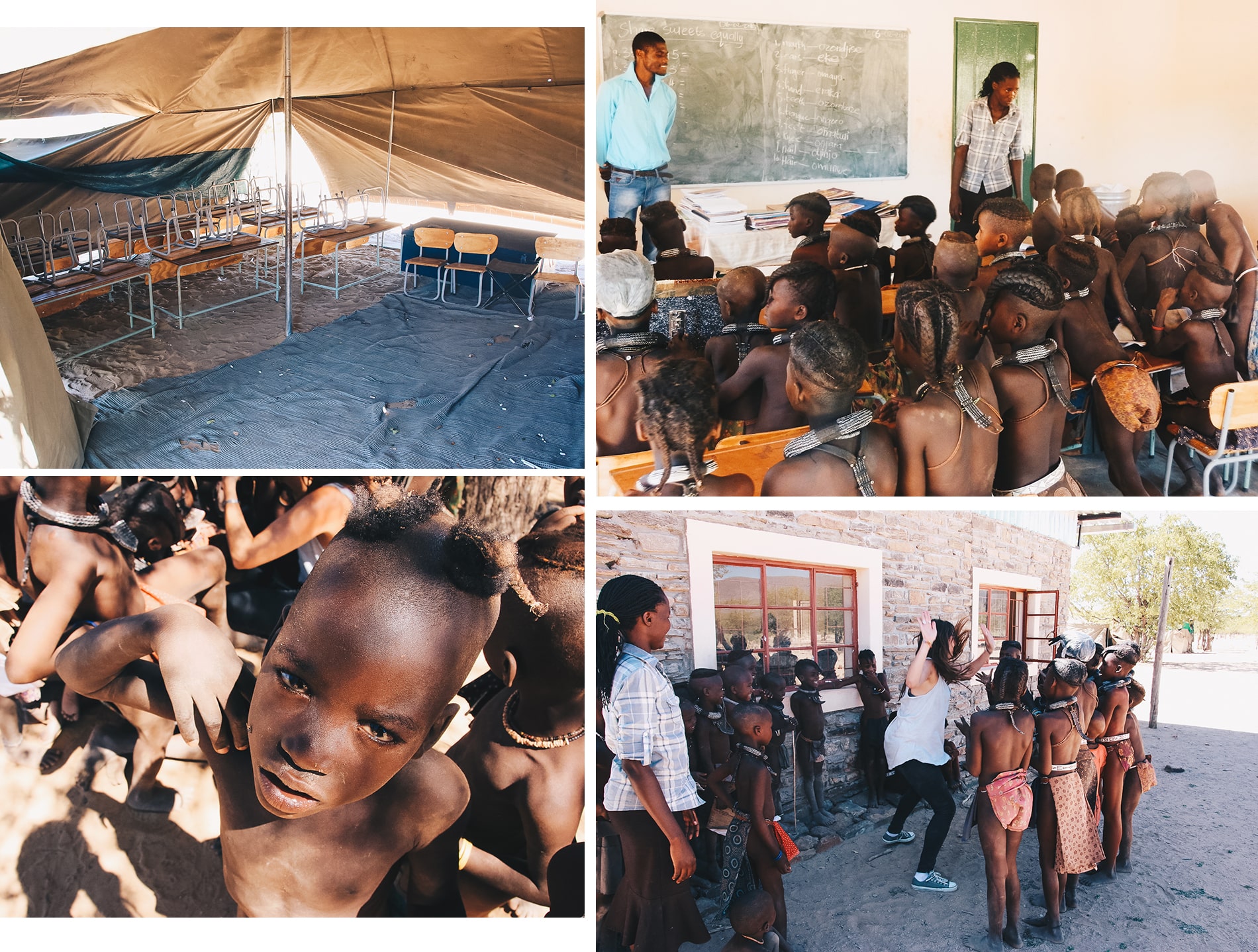
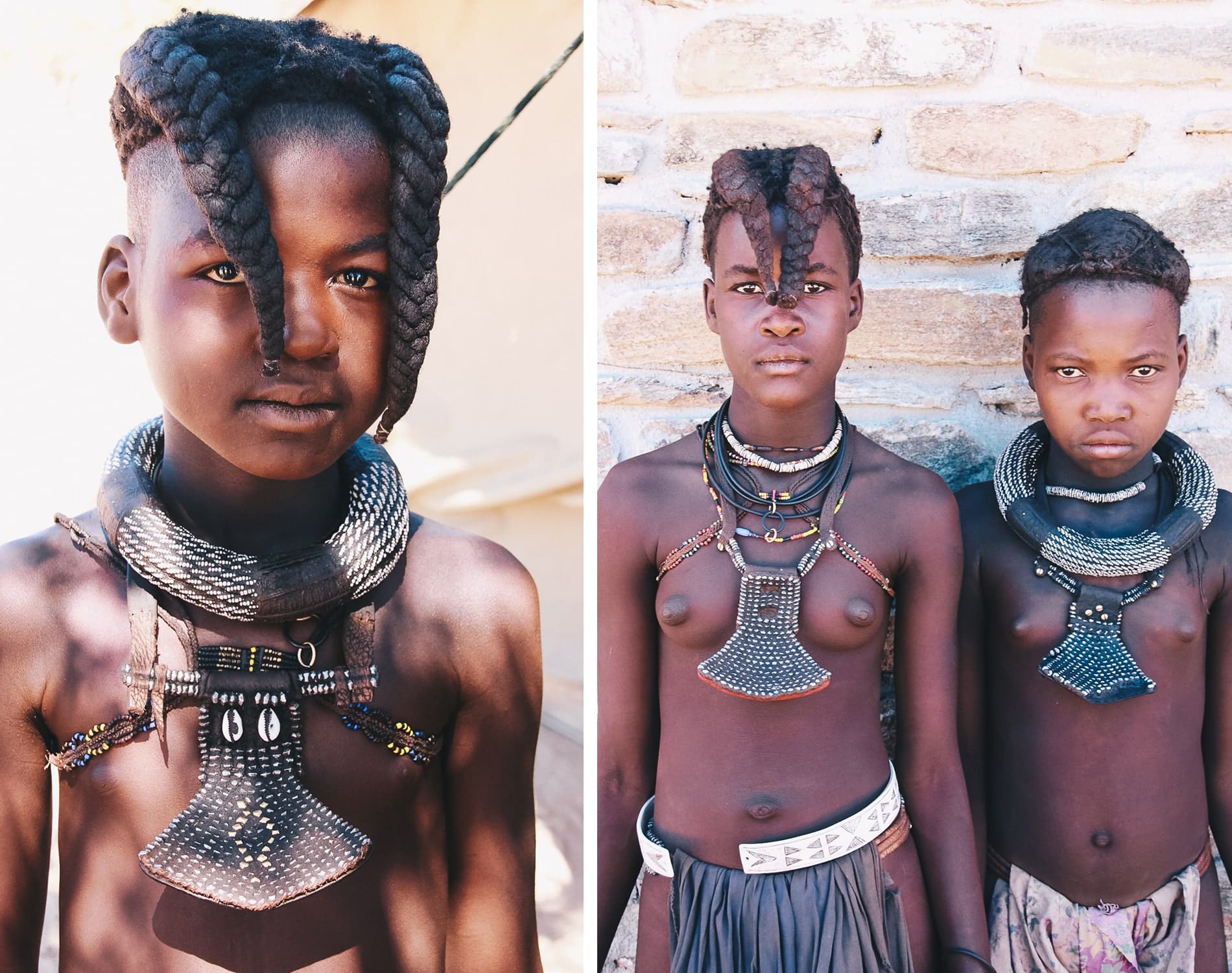
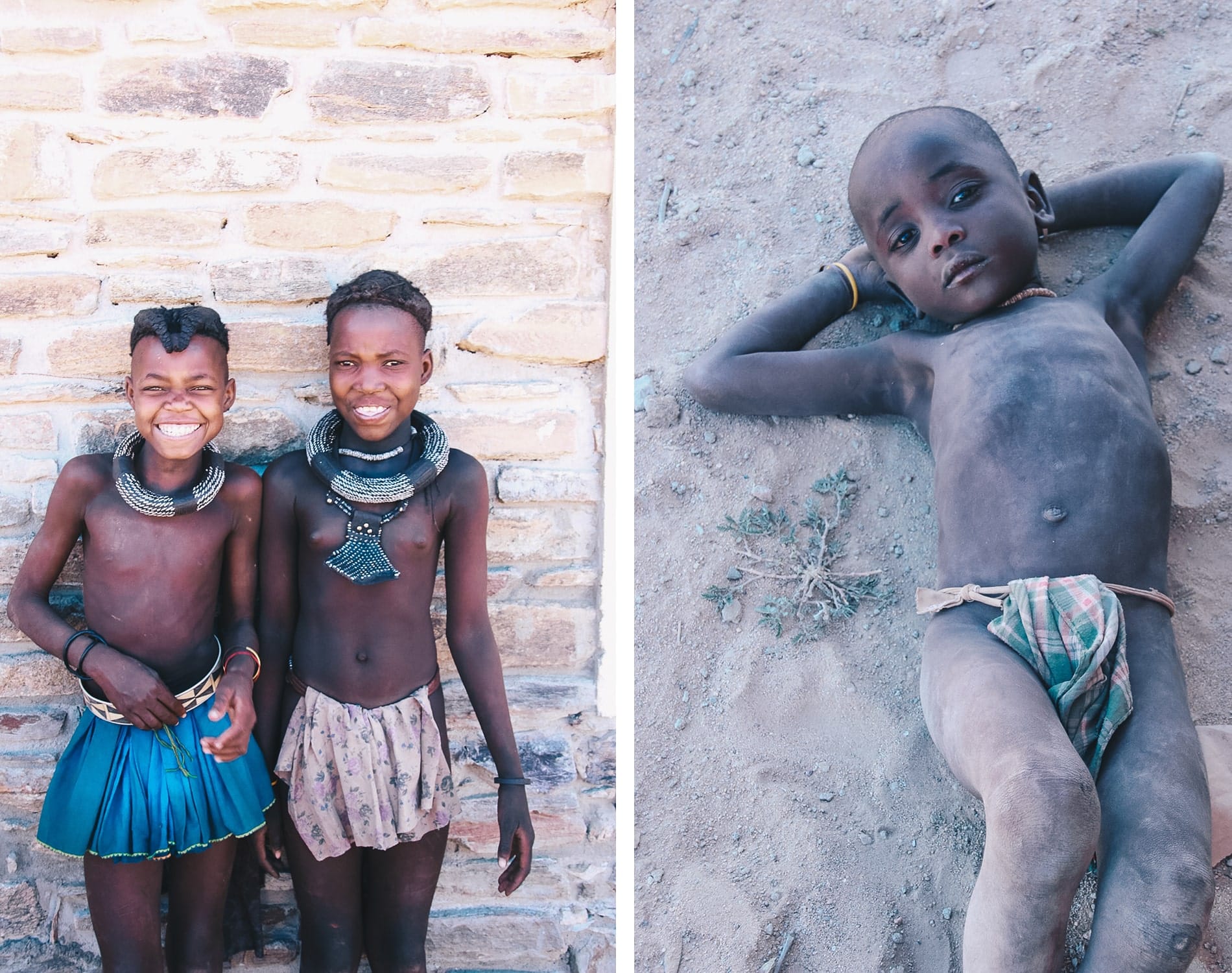
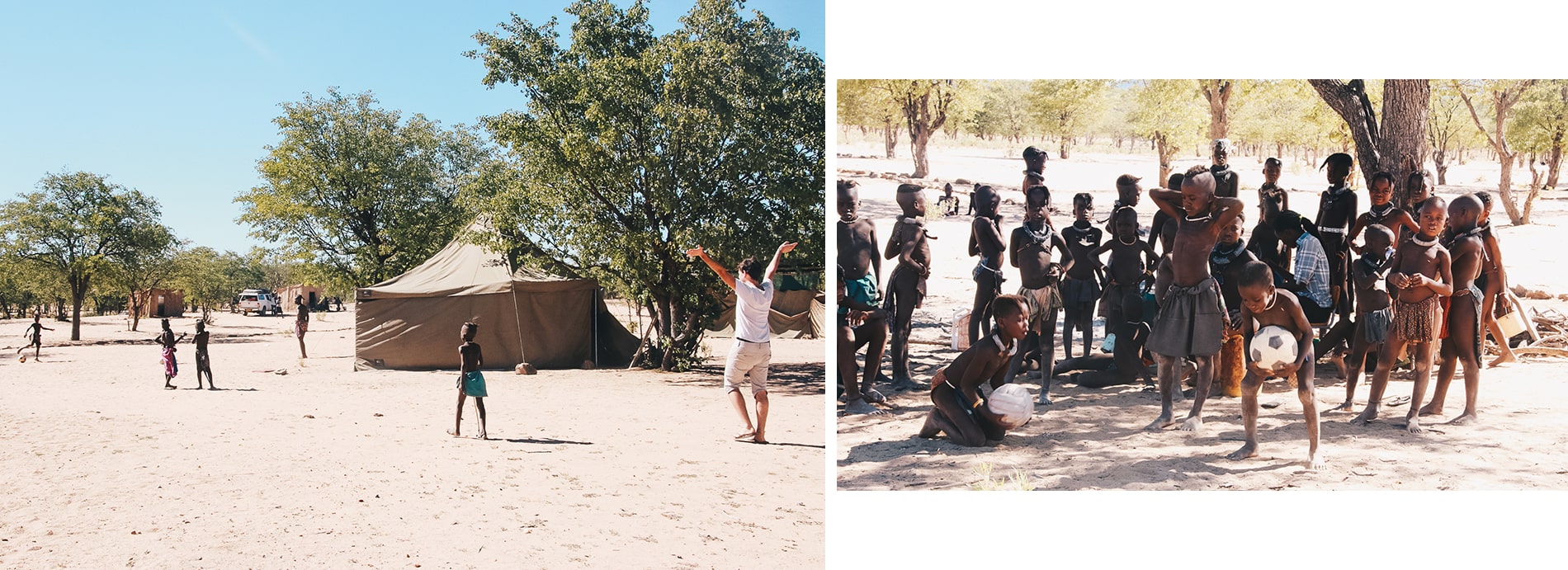
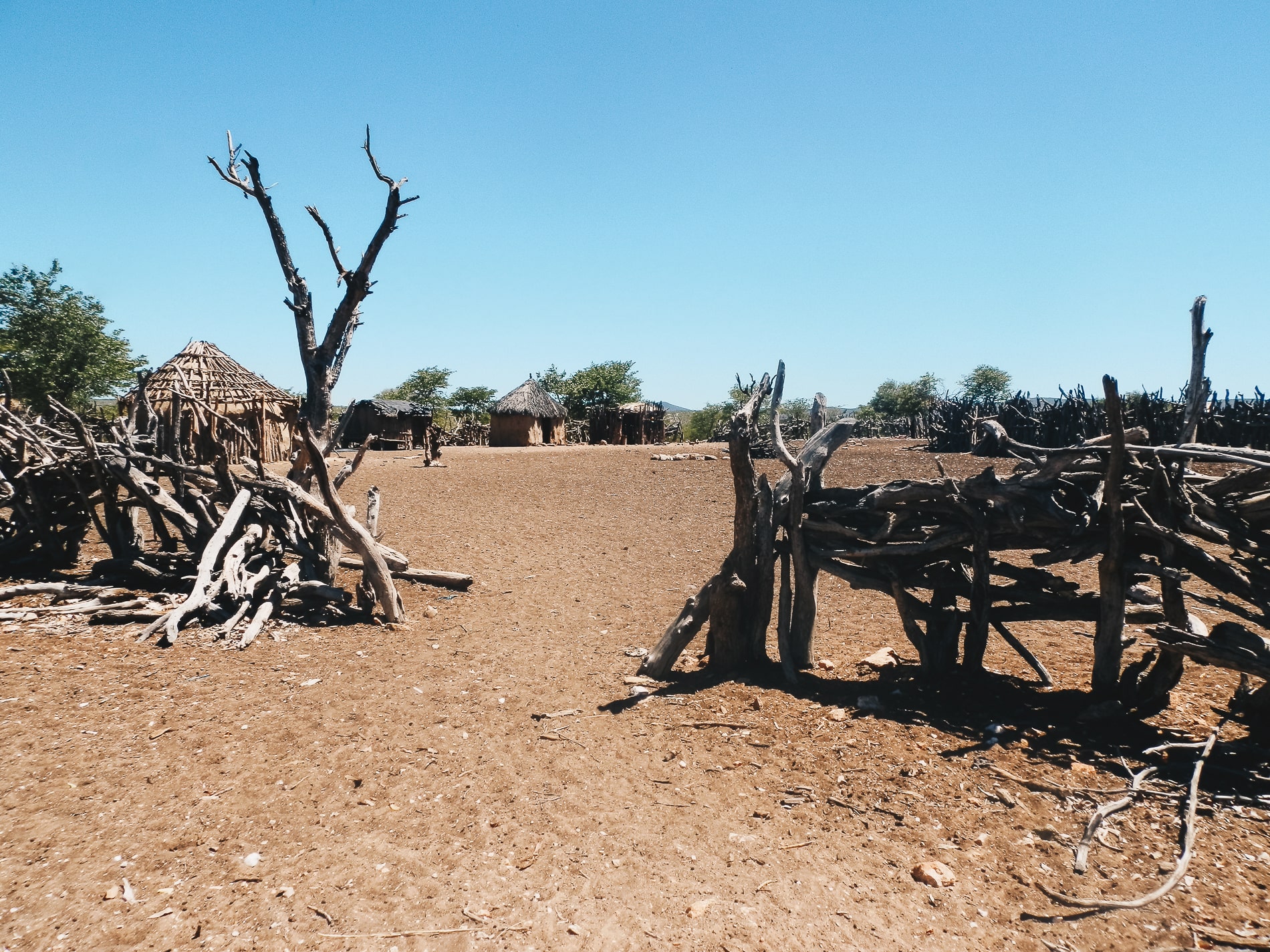
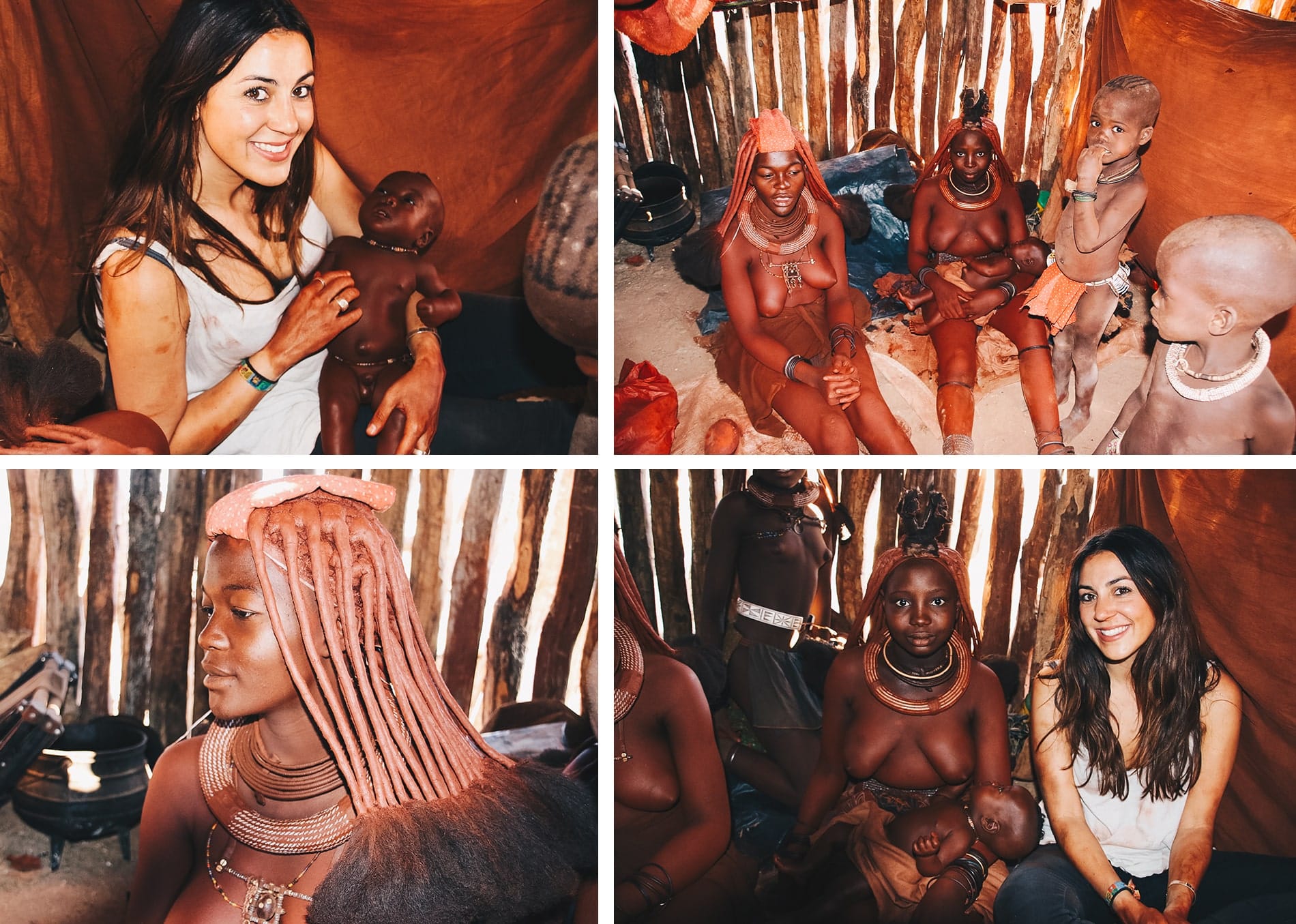
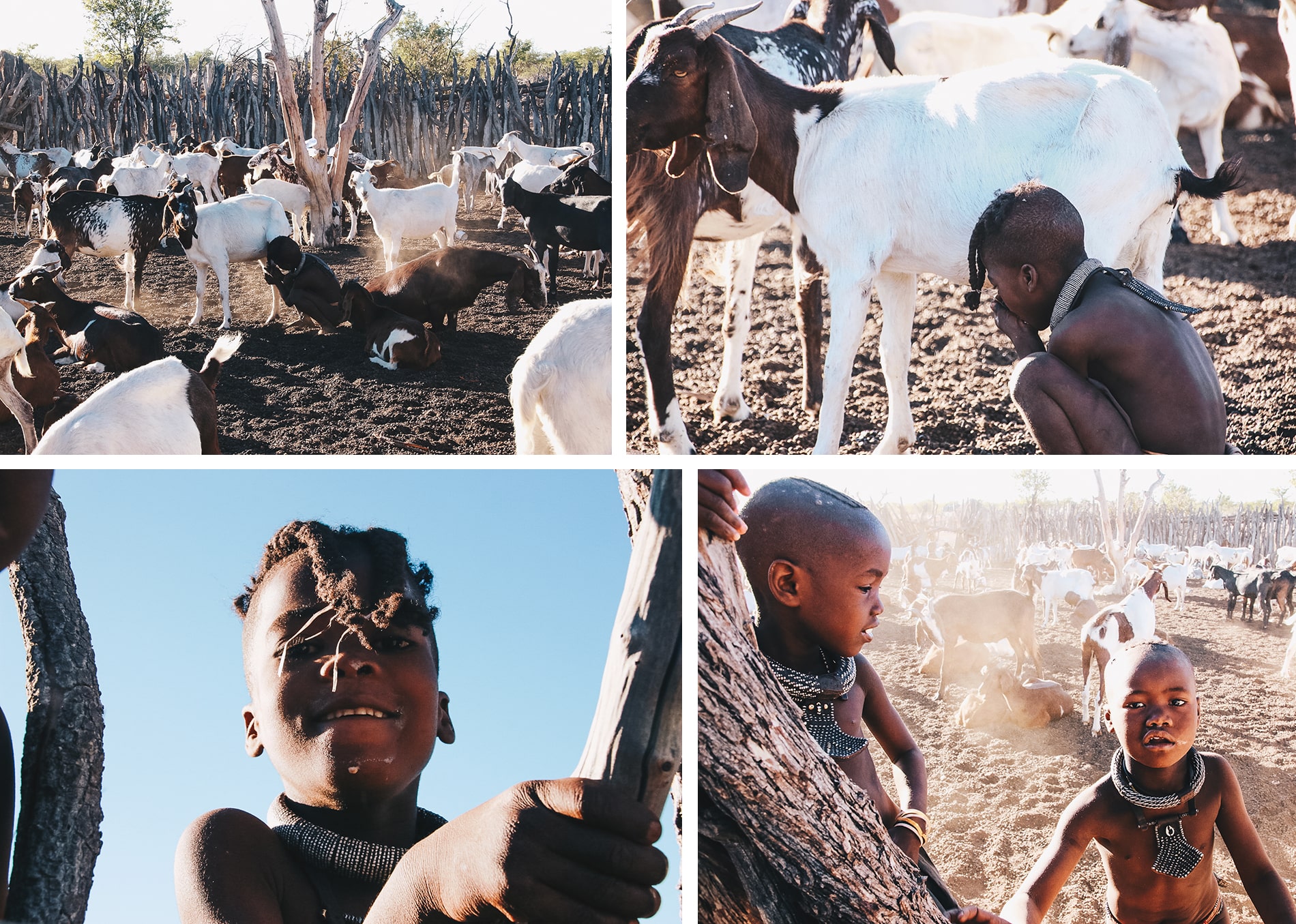
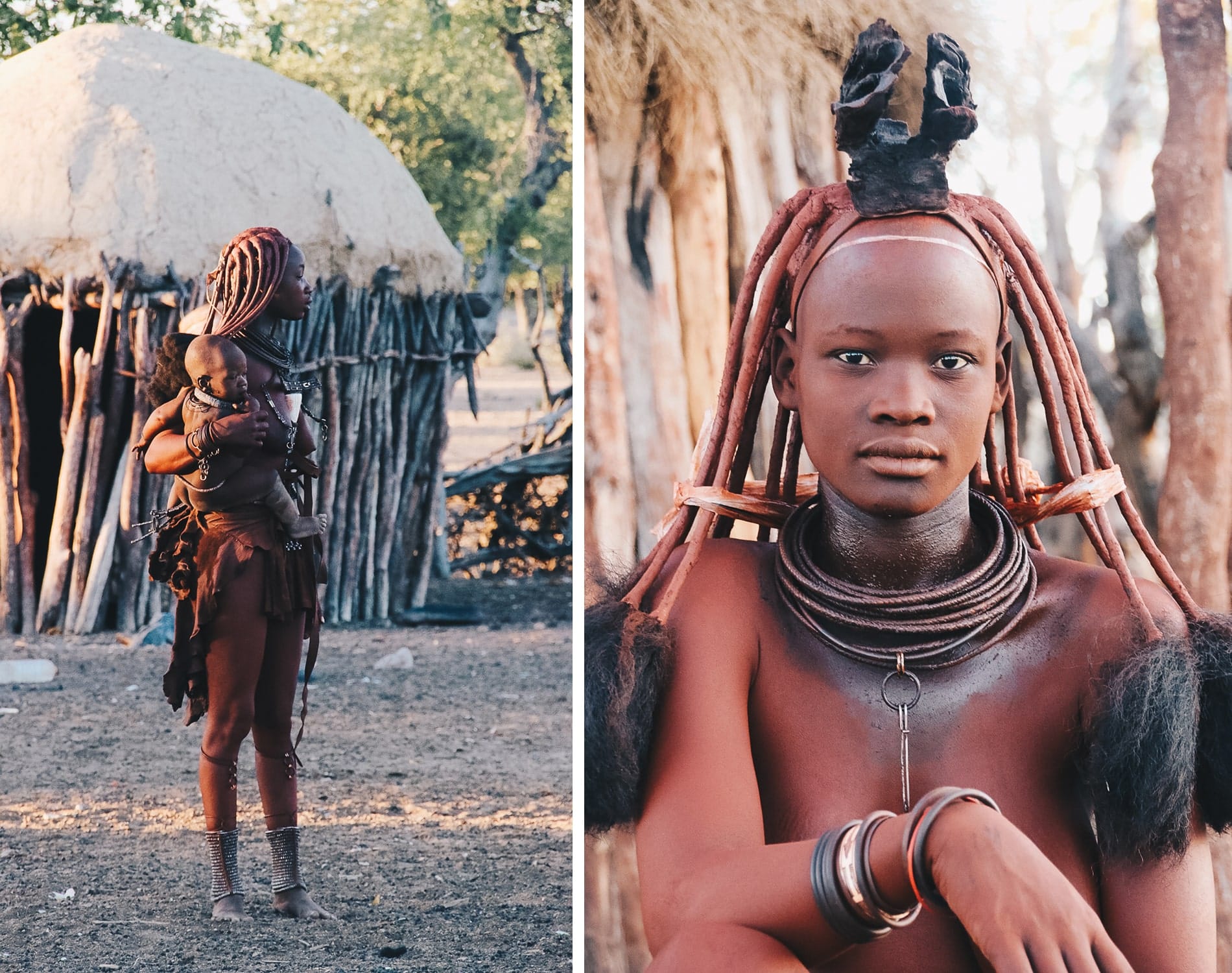
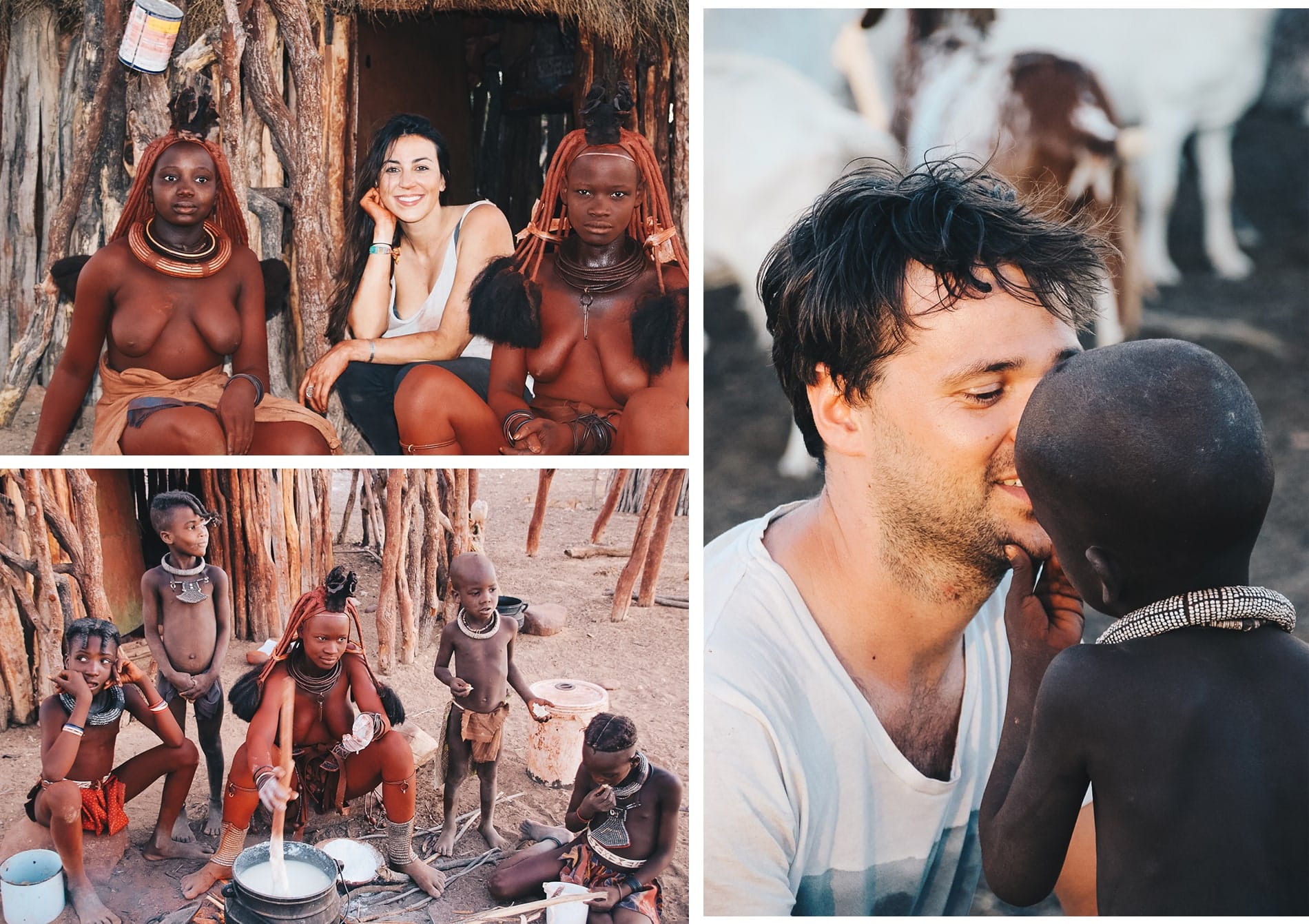
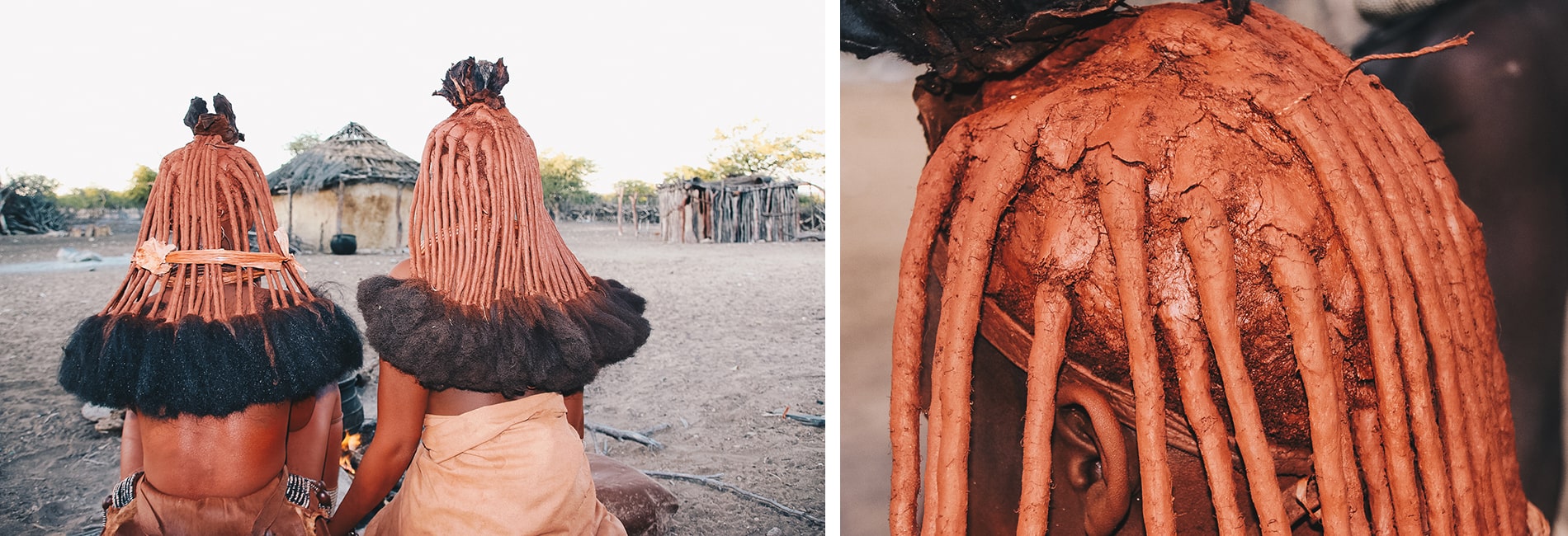
| HOW TO DECIPHER THEIR DRESS CODES?
- As soon as they start menstruating, a ceremony is organized in their honor. They wear metal necklaces and heavy bracelets around their necks and ankles. When they give birth to their first child, they lose the large necklace they wear around their necks, called “OMBUENA “.
- When a Himba woman is expecting her first child, her parents open her necklace to signify that she is about to become a mother, and move on from being a young woman to a full-fledged woman.
- The older the Himbas get, the more jewelry they wear, especially anklets.
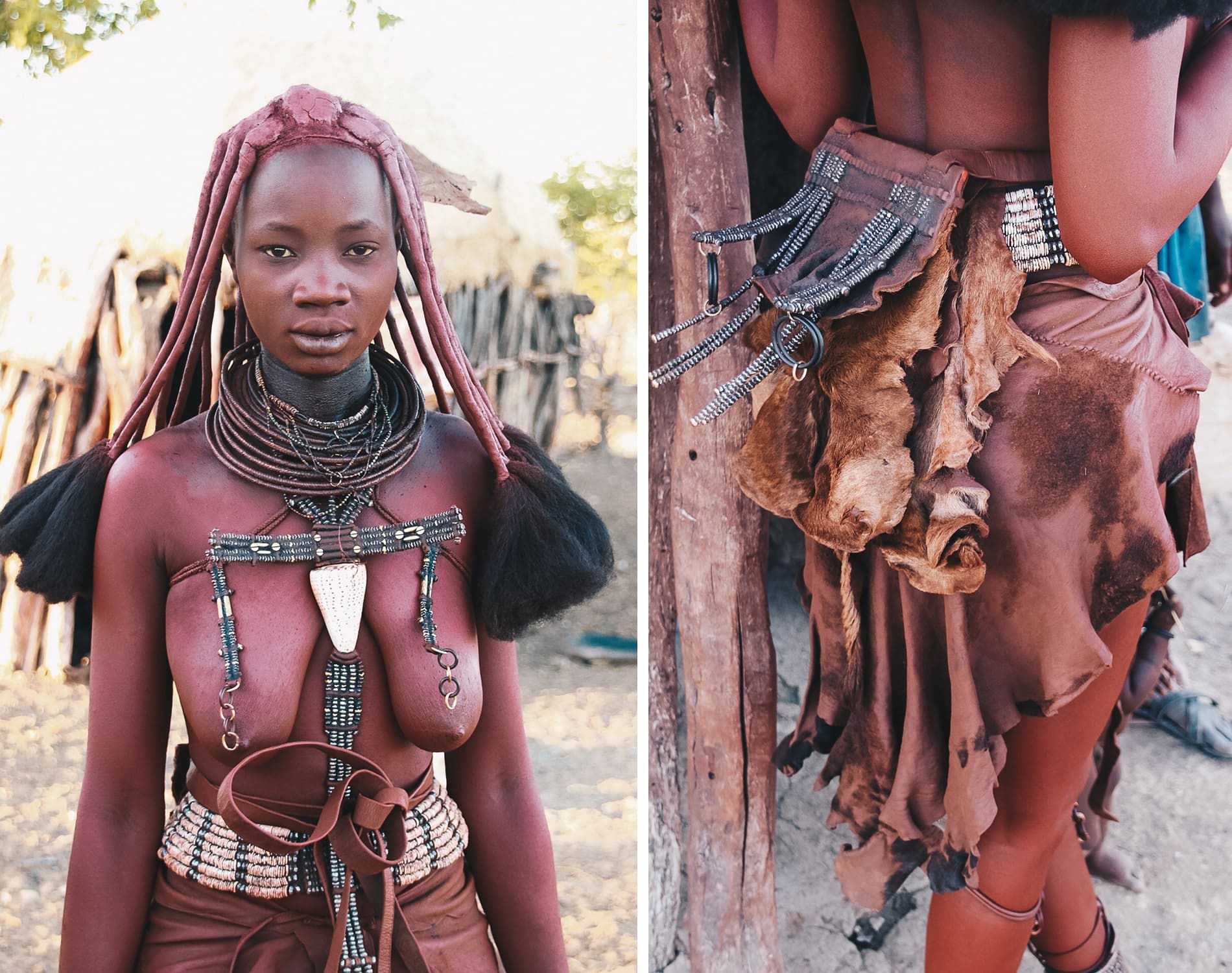
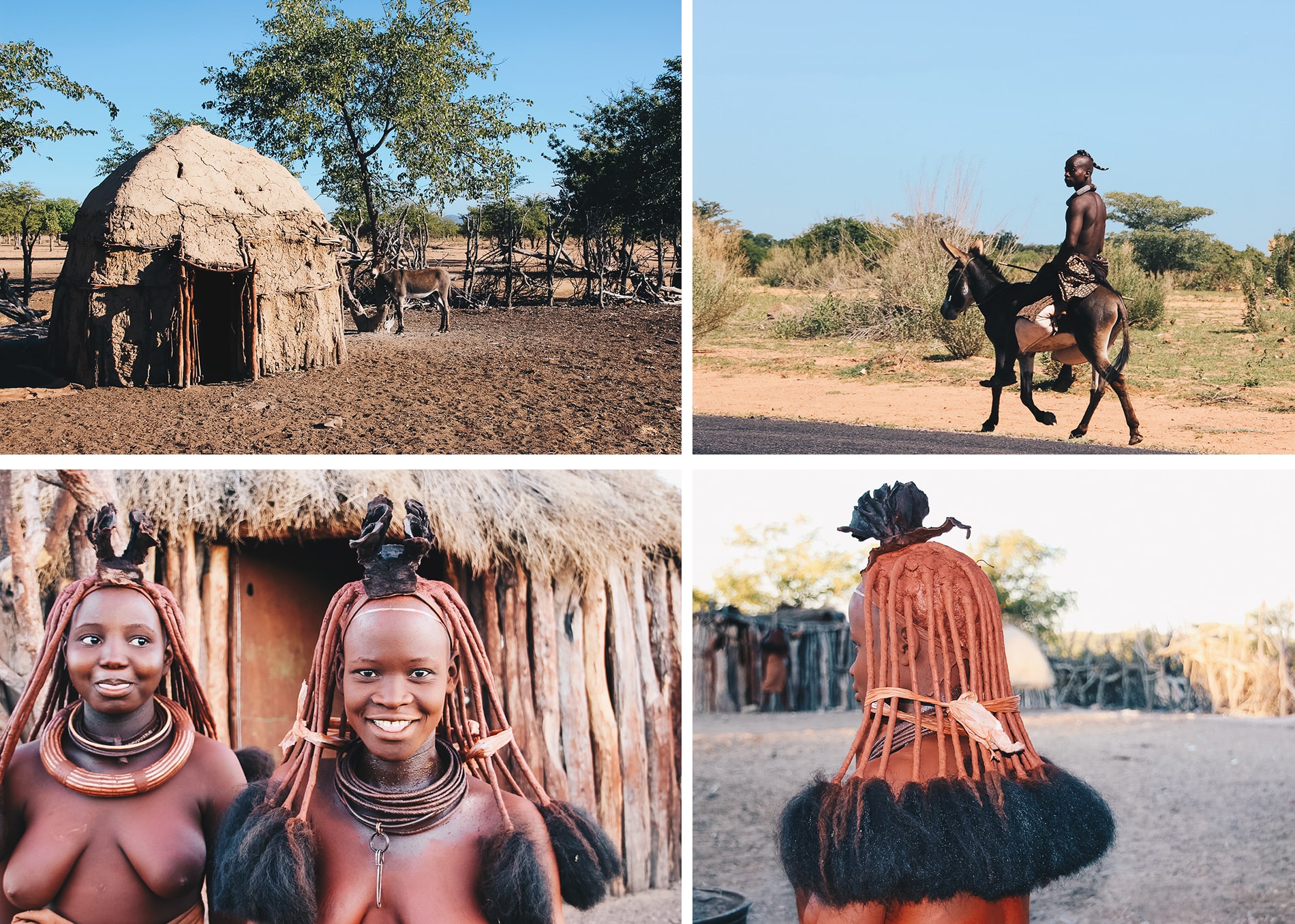
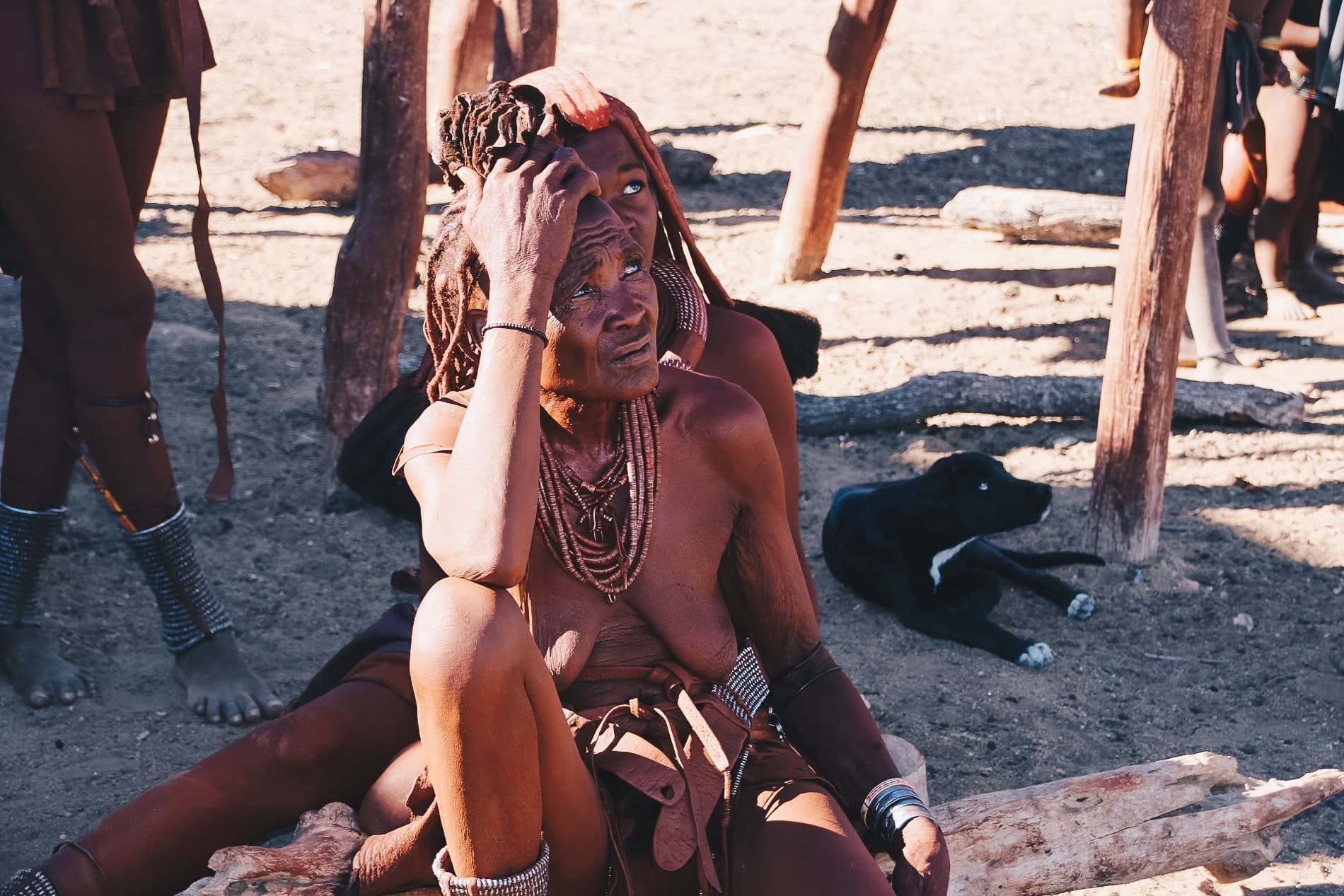
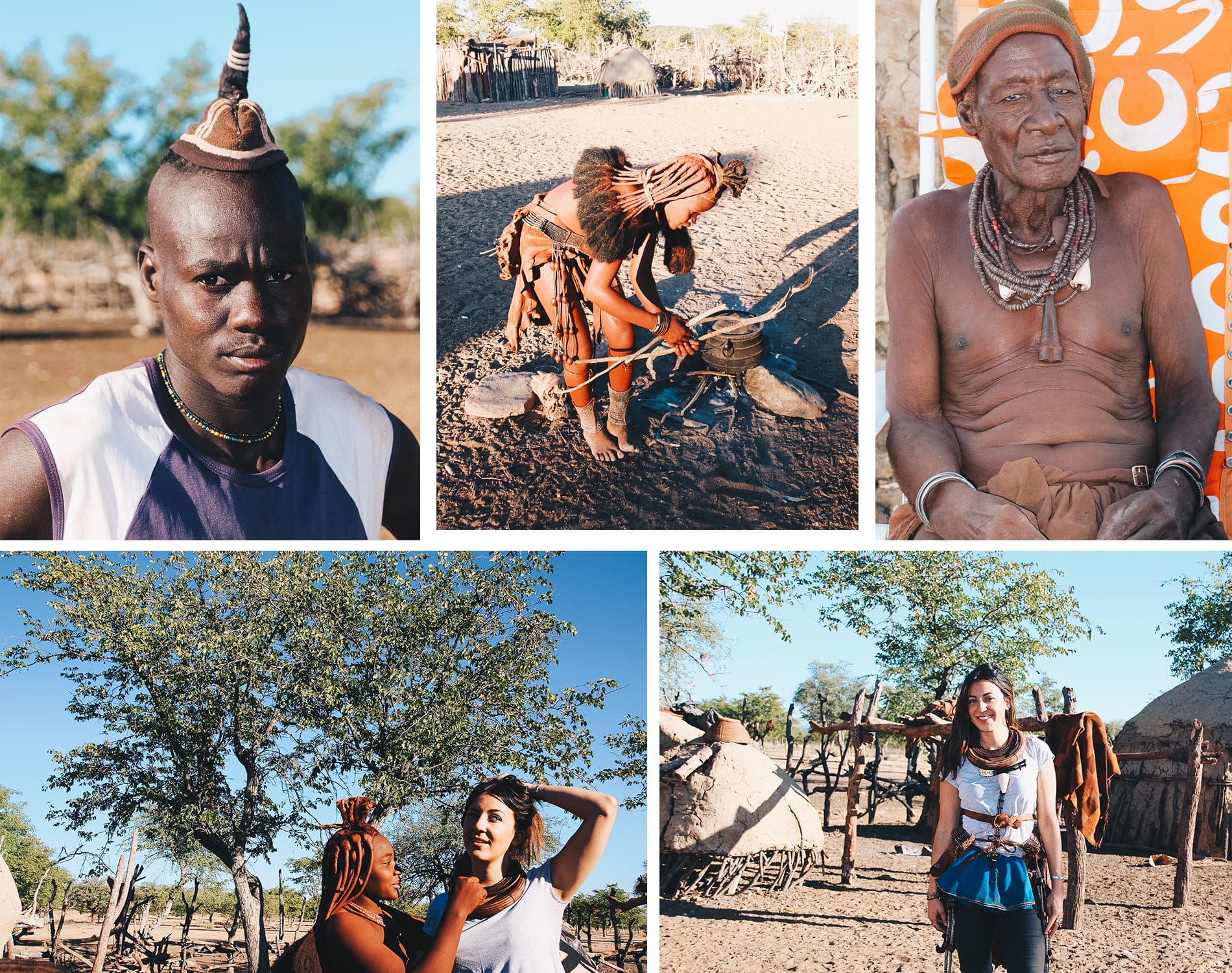
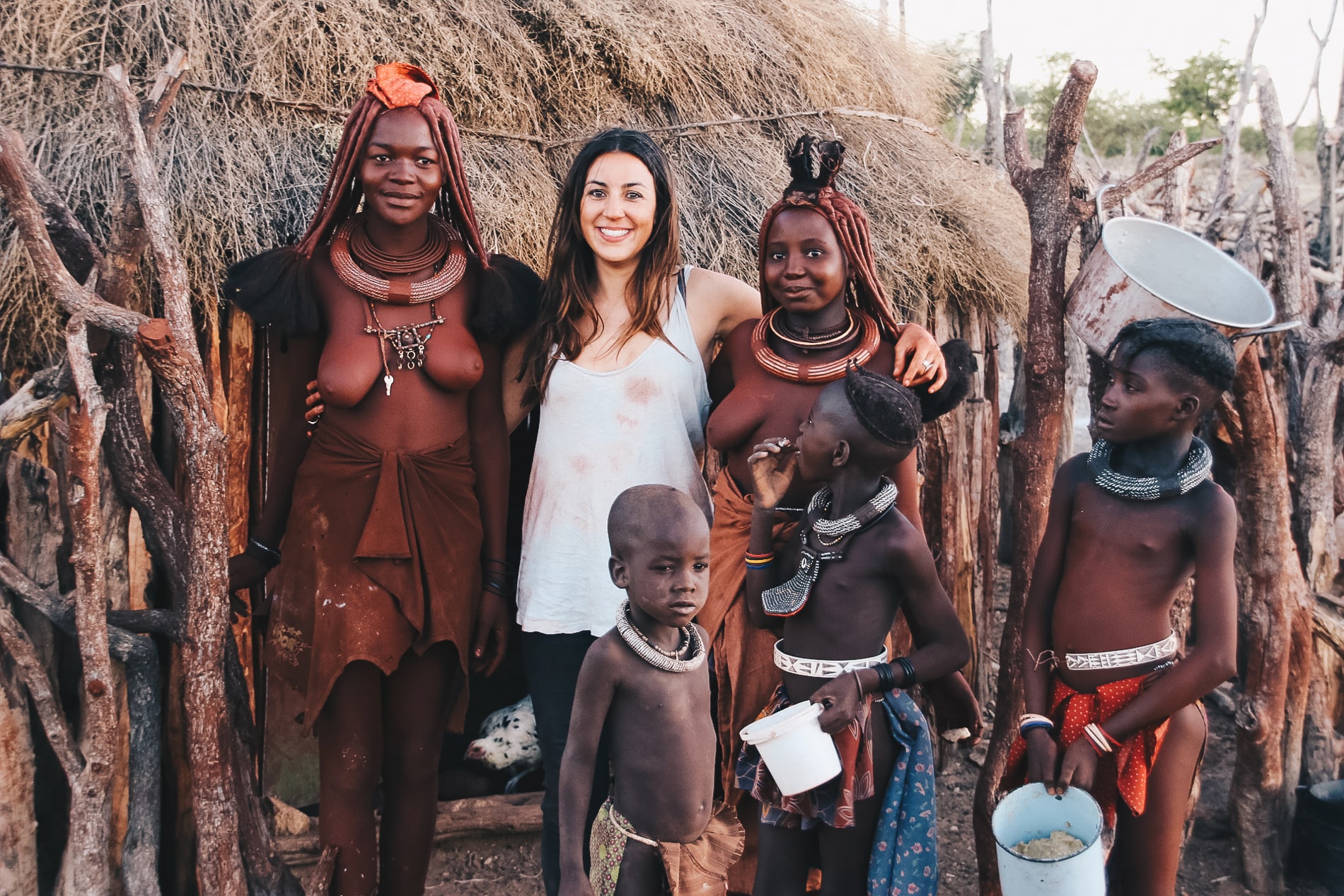
I hope my story has inspired you to meet these incredible people. I hope one day to return to this Himbas village and introduce them to my son.
Before you leave, don’t forget to read all our other articles on Namibia to help you prepare for your trip:
- 7 reasons to visit Namibia
- Discover the cheetah conservation center
- The practical guide to planning your trip to Namibia
- Our top 10 things to do in Namibia
Please note that as an accredited tailor-made travel designer, I can help you create your own personalized itinerary for your stay in Namibia. Please send me an email at : contact@mademoiselle-voyage.fr
